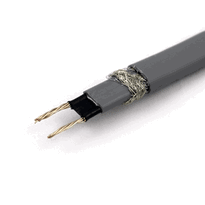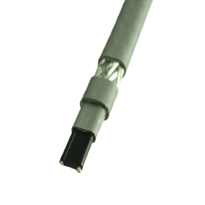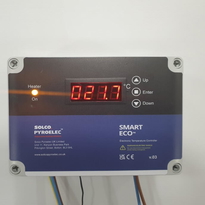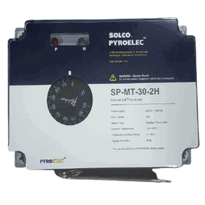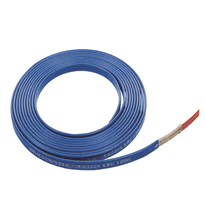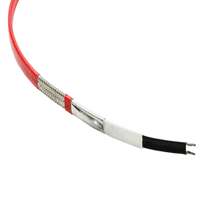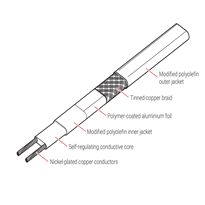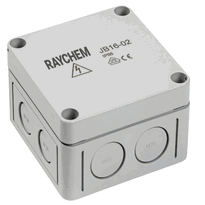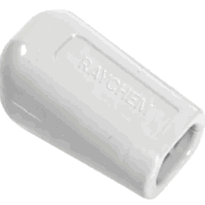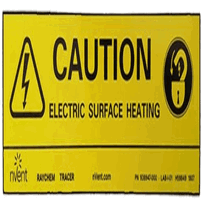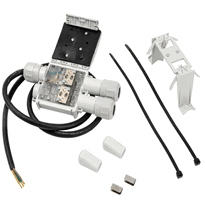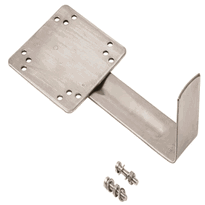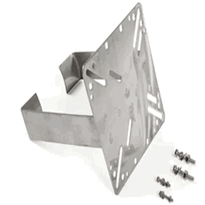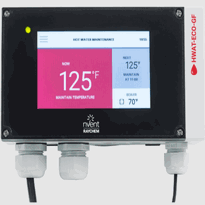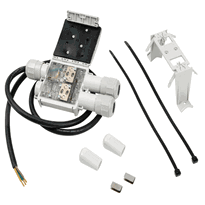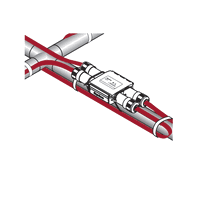Outdoor Heat Cable
Outdoor heat cables are specialized electrical systems designed to prevent the accumulation of ice by providing controlled heat beneath surfaces such as driveways, pavements, and walkways. They are available in various types, including self-regulating, constant wattage, and mineral insulated cables, each tailored to specific applications and environmental conditions. These cables are constructed with durable insulation and are manufactured to meet safety standards that guarantee reliable performance.
Proper installation is essential for optimal operation and safety. It involves following the manufacturer’s guidelines carefully, incorporating thermostats to control the temperature effectively, and undertaking regular maintenance checks. When correctly installed and maintained, outdoor heat cables offer long-term efficiency and safety, helping to reduce risks associated with ice formation and ensuring clear pathways during colder months.
Types and Construction of Outdoor Heat Cables
Outdoor heat cables are engineered to provide dependable heating solutions in challenging environmental conditions. Recognizing the different types and constructions of these cables is vital for selecting the most suitable system for your needs.
Self-regulating cables adapt their heat output according to ambient temperature. This is achieved through a conductive core that varies its conductivity as the surrounding temperature changes, ensuring energy efficiency and preventing overheating. Such cables are particularly suitable for maintaining pipelines, gutters, and roof de-icing in outdoor environments.
Constant wattage cables deliver a fixed amount of heat regardless of external conditions. These cables consist of a resistance heating element accompanied by bus wires, providing predictable and consistent performance. They're ideal for applications where precise and steady heating is required, such as frost protection in outdoor storage areas.
Mineral insulated (MI) cables feature a robust metal sheath with magnesium oxide insulation. This construction allows them to operate at very high temperatures and withstand extreme environmental conditions, making them suitable for applications exposed to harsh weather, chemical agents, or mechanical stress. Their durability is enhanced by their high-quality materials.
Surface heating cables are typically installed beneath flooring surfaces during renovation projects. They offer efficient and even heat distribution beneath tiled or wooden floors, helping to prevent mold and condensation.
Conversely, concrete heating cables are embedded within concrete slabs, utilizing the mass to distribute heat rapidly and evenly across large areas such as driveways, pathways, and exhibition halls.
The specific construction features of each type of outdoor heat cable contribute to their optimal performance and durability in outdoor applications. Selecting the right type depends on factors such as environmental conditions, application requirements, and installation preferences.
Electrical Specifications and Performance Features
Electrical specifications and performance features are vital considerations when selecting outdoor heat cables, as they directly impact safety, efficiency, and suitability for various applications.
1. Voltage and power ratings can range from 100V to 600V, with common options in the UK at 230V and 240V. Power output typically varies from 5 to 15 watts per meter, catering to different heating requirements. Larger systems can deliver thousands of watts to cover extensive surfaces such as driveways and pathways. The electrical safety standards ensure proper functioning in outdoor environments and prevent electrical hazards.
2. These cables are constructed with durable materials, featuring twin conductors encased in high-quality insulation like cross-linked polyethylene (XLPE) or fluoropolymer. They have weather-resistant jackets made from thermoplastic polyurethane (TPU). High-quality insulation ensures durability and safety over long periods of outdoor use. They are designed to withstand low temperatures, enduring conditions down to -20°C or below.
3. Safety features include self-regulating properties that prevent overheating, zero electromagnetic field (EMF) emissions, and compliance with relevant standards such as CSA. These attributes ensure reliable and safe operation in the challenging outdoor environment.
Applications of Outdoor Heat Cables in Various Settings
Ground heating is a key application of outdoor heat cables, commonly installed beneath surfaces such as concrete slabs, asphalt layers, or paved areas including driveways, ramps, and walkways.
This system helps prevent the accumulation of ice and snow during cold winter weather, ensuring safety and accessibility.
These cables are typically laid in secure sand beds beneath the surface with the help of fastening accessories or mesh reinforcement that provides stability and maintains proper positioning during installation.
To regulate operation and maintain consistent temperatures, ground thermostats are employed. They help prevent overheating, contributing to energy efficiency and prolonging the lifespan of the system.
The power output rating of these heat cables varies depending on the ground surface type. More robust wattage may be required for concrete surfaces to ensure adequate heating performance.
Optional insulation layers can be incorporated beneath the cables to improve heat retention, depending on the nature of the supporting ground material and thermal requirements.
Proper insulation not only enhances energy efficiency but also helps prevent heat loss, ensuring more effective ground heating during winter months.
Overall, ground heating systems with outdoor heat cables play a vital role in maintaining safe, ice-free surfaces during winter months.
They reduce the likelihood of accidents and property damage, supporting safer and more reliable access in cold conditions.
Installation Safety Measures and Standards
To ensure the safe and effective installation of outdoor heat cables, it's crucial to follow established safety measures and compliance standards that govern electrical and material practices within the UK. Adhering to these guidelines helps minimise hazards and maintain system reliability, particularly in outdoor environments exposed to the elements.
Key safety practices include maintaining manufacturer-recommended spacing to prevent hot spots, which can lead to cable damage or failure. Regular inspections of the cables for any signs of wear, damage, or deterioration are essential to identify issues early. Always install a thermostat to regulate temperature and prevent overheating, which adds an extra layer of safety and efficiency to the system.
It's important to utilize cables that are certified for hazardous locations, such as those compliant with BS EN 60079 standards for hazardous area equipment, including classifications like Class I, Division 2, or ATEX Zone 2.
Employing ground-fault circuit interrupter (GFCI) protection is vital, as it significantly reduces the risk of electric shock.
All installation procedures should ensure secure placement of cables, using manufacturer-approved ties or fixings. Care must be taken to avoid overtightening, which can damage the cable insulation and compromise safety.
Prior to energizing the system, comprehensive electrical tests should be carried out to verify proper installation and functionality.
Ongoing maintenance plays a key role in ensuring long-term safety and compliance. Regular infrared thermography inspections can help detect abnormal heat build-up, preventing potential failures.
Additionally, periodic testing of GFCIs ensures they respond correctly during fault conditions, safeguarding both personnel and property.
Conclusion
Proper selection, installation, and adherence to safety standards are essential for the effective use of outdoor heat cables. Understanding their types, specifications, and suitable applications ensures reliable performance, mitigates risks, and extends their lifespan. Professionals should carefully assess environmental conditions and operational requirements to determine the most appropriate configurations. Regular maintenance and compliance with industry standards further enhance safety and efficiency, making outdoor heat cables a practical solution for managing cold-related issues in various outdoor settings.








